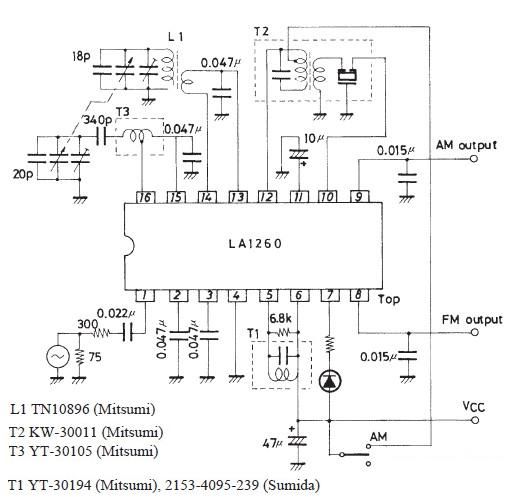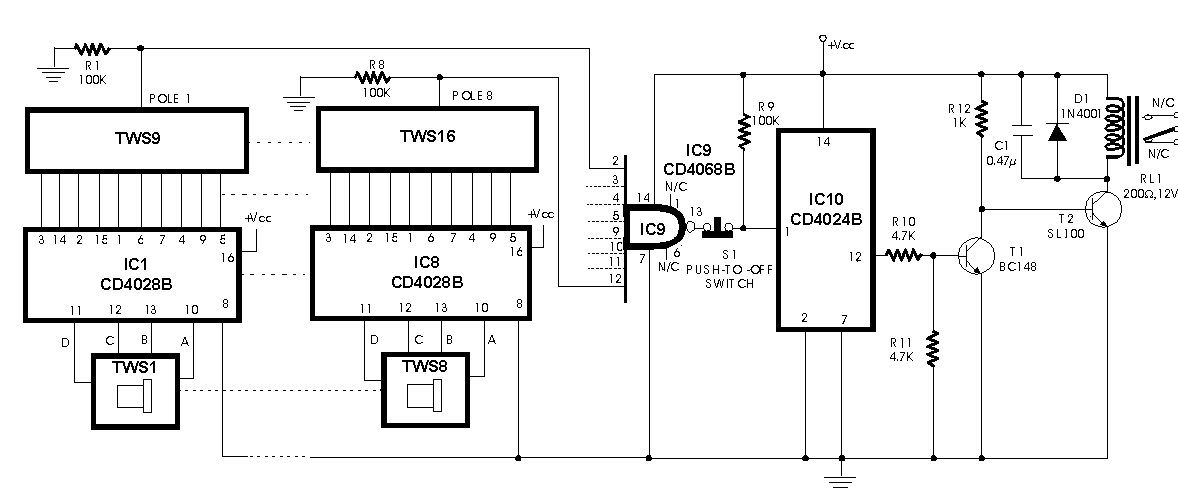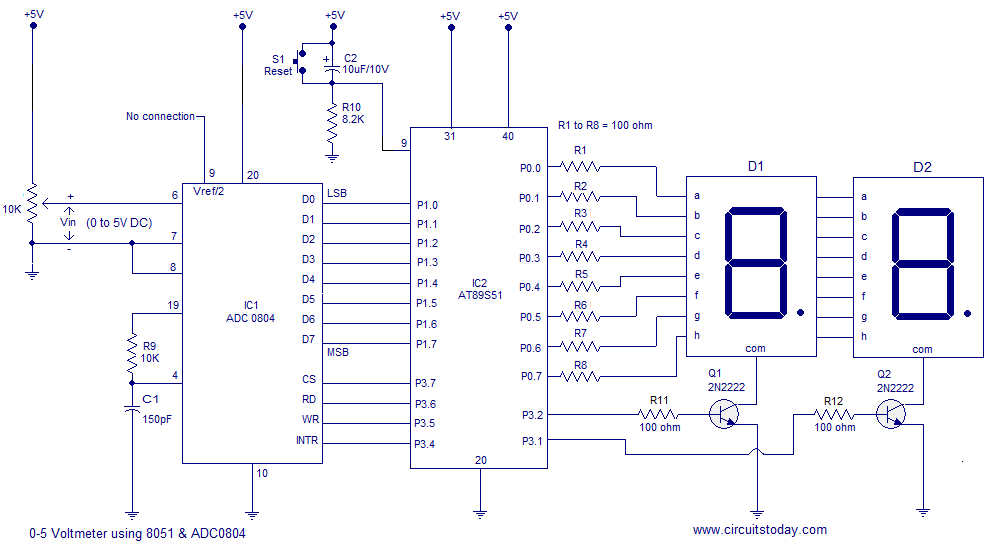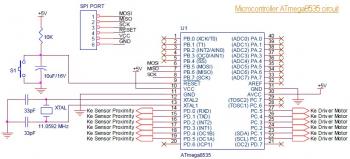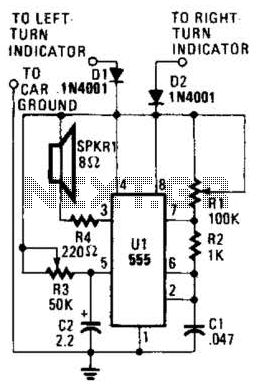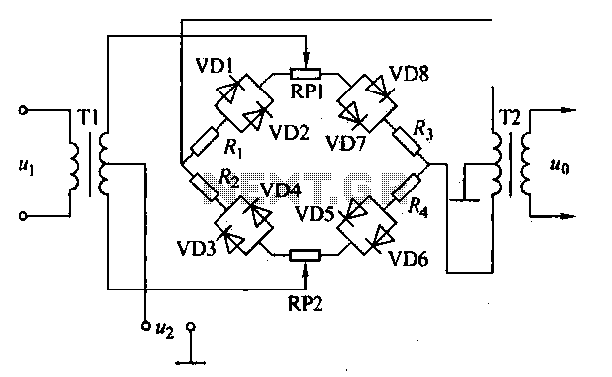
Frequency signal tracking circuit (PLL circuit) composed of CD4046
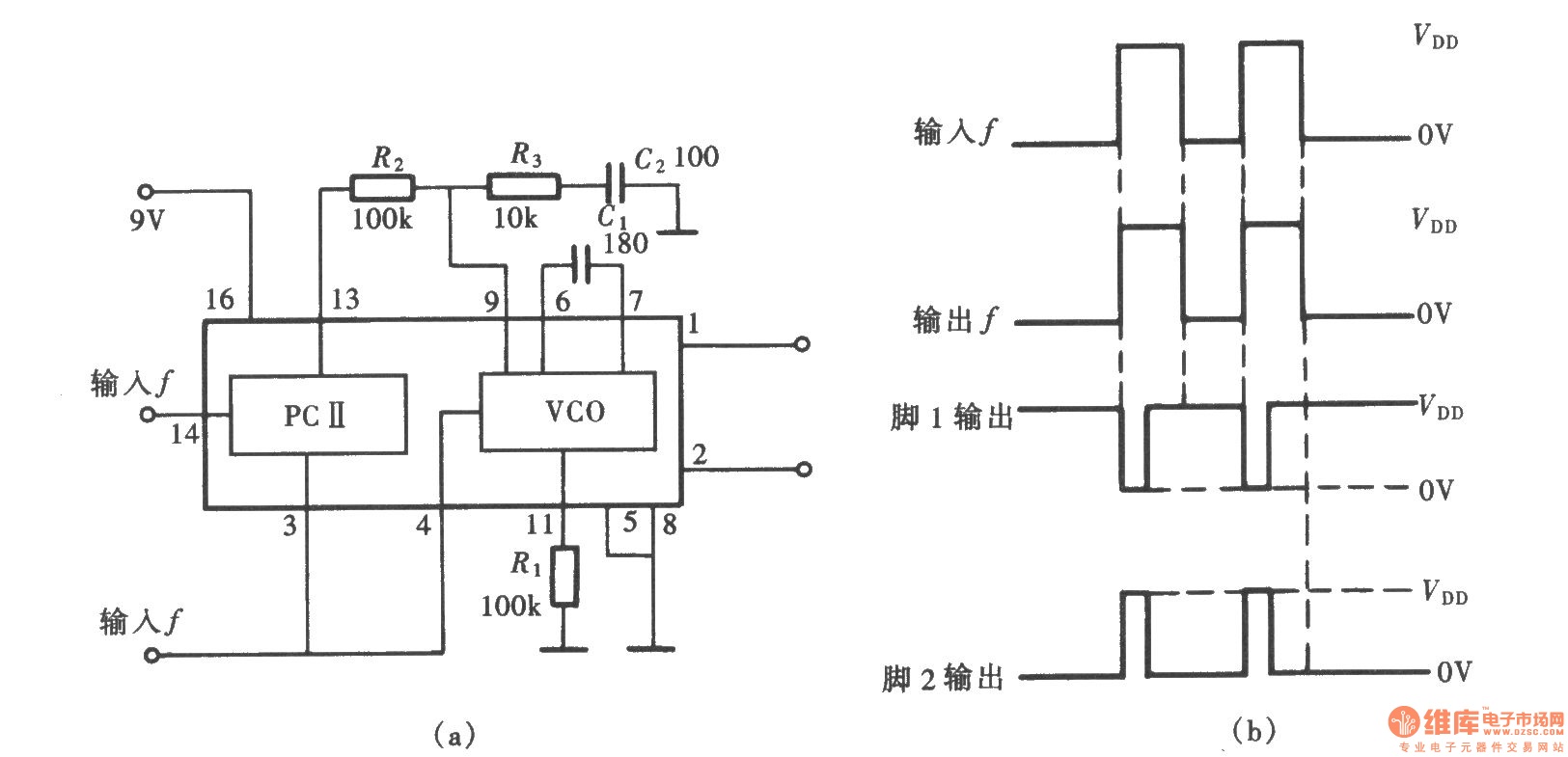
A frequency signal tracking circuit is implemented using a phase-locked loop (PLL) configuration, which is a fundamental application of the CD4046 integrated circuit. The circuit, illustrated in the accompanying chart, utilizes the CD4046 to form a PLL that effectively captures and tracks input signals within a frequency range of 100 Hz to 100 kHz.
The frequency signal tracking circuit based on the CD4046 operates by synchronizing an output signal with the frequency of an input signal. The key components of this PLL circuit include a phase comparator, a voltage-controlled oscillator (VCO), and a low-pass filter.
1. **Phase Comparator**: The phase comparator compares the phase of the input signal with the phase of the output signal generated by the VCO. It produces an error signal that indicates the phase difference between the two signals. This error signal is crucial for adjusting the VCO frequency to match the input signal.
2. **Voltage-Controlled Oscillator (VCO)**: The VCO generates an output frequency that can be varied based on the control voltage applied to it. In this circuit, the control voltage is derived from the output of the phase comparator after it has been filtered by the low-pass filter.
3. **Low-Pass Filter**: The low-pass filter smooths out the error signal from the phase comparator, removing high-frequency noise and providing a stable control voltage to the VCO. This ensures that the VCO responds appropriately to changes in the input signal frequency without introducing unwanted fluctuations.
The CD4046 allows for flexibility in the design of the PLL circuit, enabling adjustments to the loop bandwidth and damping factor, which can be tailored to specific applications. The circuit is capable of locking onto input frequencies ranging from 100 Hz to 100 kHz, making it suitable for a variety of signal processing tasks such as frequency demodulation, clock recovery, and signal synchronization in communication systems.
Overall, the frequency signal tracking circuit utilizing the CD4046 is a robust solution for applications requiring precise frequency tracking and phase synchronization.Frequency signal tracking circuit is the phase-locked loop circuit, which is one of the basic application circuit of CD4046. The circuit shown as the chart and composed of CD4046 is a PLL circuit, and it can capture and track the input signal with the input frequency in l00?100kHz..
🔗 External reference
The frequency signal tracking circuit based on the CD4046 operates by synchronizing an output signal with the frequency of an input signal. The key components of this PLL circuit include a phase comparator, a voltage-controlled oscillator (VCO), and a low-pass filter.
1. **Phase Comparator**: The phase comparator compares the phase of the input signal with the phase of the output signal generated by the VCO. It produces an error signal that indicates the phase difference between the two signals. This error signal is crucial for adjusting the VCO frequency to match the input signal.
2. **Voltage-Controlled Oscillator (VCO)**: The VCO generates an output frequency that can be varied based on the control voltage applied to it. In this circuit, the control voltage is derived from the output of the phase comparator after it has been filtered by the low-pass filter.
3. **Low-Pass Filter**: The low-pass filter smooths out the error signal from the phase comparator, removing high-frequency noise and providing a stable control voltage to the VCO. This ensures that the VCO responds appropriately to changes in the input signal frequency without introducing unwanted fluctuations.
The CD4046 allows for flexibility in the design of the PLL circuit, enabling adjustments to the loop bandwidth and damping factor, which can be tailored to specific applications. The circuit is capable of locking onto input frequencies ranging from 100 Hz to 100 kHz, making it suitable for a variety of signal processing tasks such as frequency demodulation, clock recovery, and signal synchronization in communication systems.
Overall, the frequency signal tracking circuit utilizing the CD4046 is a robust solution for applications requiring precise frequency tracking and phase synchronization.Frequency signal tracking circuit is the phase-locked loop circuit, which is one of the basic application circuit of CD4046. The circuit shown as the chart and composed of CD4046 is a PLL circuit, and it can capture and track the input signal with the input frequency in l00?100kHz..
🔗 External reference
